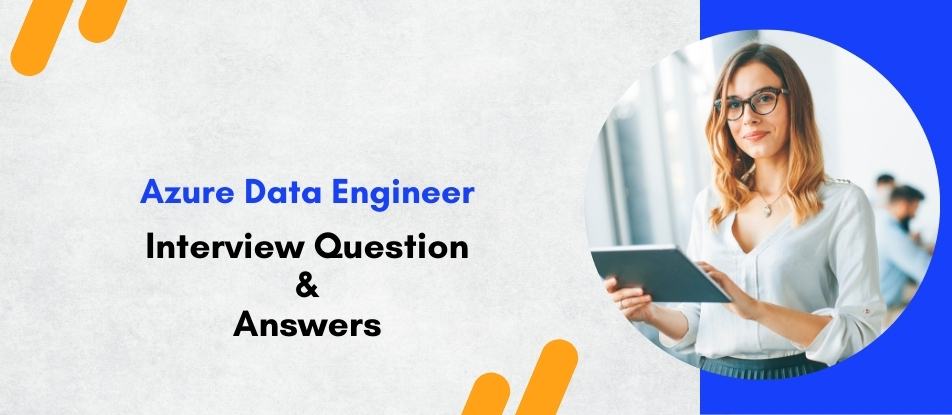
The Azure Data Engineer training provides comprehensive knowledge to design, build, and maintain data processing systems on Microsoft Azure. It covers key services like Azure Data Factory, Azure Synapse, Azure Databricks, and Data Lake Storage. Learners will gain expertise in building ETL pipelines, managing data security, performing data transformations, and optimizing data storage solutions. This course is ideal for professionals aiming to become certified Azure Data Engineers or work in advanced data analytics and cloud-based data engineering roles.
Azure Data Engineer Training Interview Questions Answers - For Intermediate
1. What is a Data Flow in Azure Data Factory and how is it different from a Pipeline?
A Data Flow in Azure Data Factory is a visual, code-free data transformation component designed for complex ETL operations at scale. It allows users to build transformations like joins, aggregations, lookups, and conditional splits using a graphical UI backed by Spark. While pipelines in ADF are used for orchestrating and managing data movement activities, Data Flows are specifically for performing in-memory data transformations. Pipelines act as containers that include various activities (such as Copy, Execute Data Flow, Web, and Stored Procedure), whereas Data Flows are dedicated to transforming datasets as part of the pipeline execution.
2. How does Azure Key Vault integrate with Azure Data Factory?
Azure Key Vault securely stores secrets, connection strings, and access keys, and integrates with Azure Data Factory (ADF) to protect sensitive data. When defining linked services in ADF, users can reference secrets from Key Vault rather than hardcoding them. This approach centralizes secret management, supports automatic rotation, enhances security, and ensures compliance. ADF can use system-assigned or user-assigned managed identities to authenticate securely to the Key Vault and retrieve secrets during runtime.
3. What is the difference between DataBricks and HDInsight in Azure?
Both Azure Databricks and HDInsight are big data processing platforms, but they differ in architecture and use cases. Azure Databricks is a high-performance analytics platform based on Apache Spark, optimized with collaborative notebooks, integrated machine learning, and streamlined data workflows. HDInsight, however, is a fully managed cloud distribution of open-source frameworks such as Hadoop, Hive, Kafka, and Spark. Databricks is preferred for advanced analytics, AI/ML, and performance, while HDInsight suits scenarios requiring broader open-source ecosystem compatibility.
4. Explain how schema evolution is handled in Azure Data Lake Gen2.
Schema evolution refers to the capability of a data storage system to accommodate structural changes in data over time. Azure Data Lake Gen2 itself is a storage layer and doesn't enforce schema, so the responsibility falls on data processing tools like Spark or Synapse. Using formats like Parquet and Delta Lake enables schema-on-read and automatic schema merging during writes. These tools allow flexibility in evolving the schema, such as adding or removing columns, while maintaining backward compatibility with existing data.
5. What are the different types of Integration Runtimes in Azure Data Factory?
Azure Data Factory offers three types of Integration Runtimes (IRs): Azure IR for cloud-based data movement and transformation, Self-hosted IR for accessing on-premises or private network data sources, and Azure-SSIS IR for running SQL Server Integration Services (SSIS) packages in Azure. Each runtime provides distinct capabilities and deployment modes, allowing ADF to support a wide range of hybrid and enterprise data integration scenarios.
6. How does Azure Purview assist data engineers in managing data governance?
Azure Purview is a unified data governance solution that helps data engineers discover, classify, and manage metadata across hybrid sources. It enables automated scanning of data stores, data lineage tracking, and data classification using built-in or custom rules. This enhances visibility into the data estate, ensures compliance with privacy standards, and supports better collaboration across analytics and engineering teams through a centralized data catalog.
7. What is the purpose of staging data in a data pipeline?
Staging data serves as an intermediate step in a data pipeline where raw data is ingested and stored temporarily before transformation or loading into the final destination. This layer improves performance by decoupling data ingestion from transformation, supports auditing and rollback, and helps maintain data integrity. It also enables data engineers to validate, clean, or enrich data incrementally before moving it to curated zones like a data warehouse or lakehouse.
8. How is performance optimized in Azure Synapse SQL pools?
Performance optimization in Azure Synapse SQL dedicated pools involves distributing data using proper distribution methods (hash, round-robin, replicated), selecting appropriate resource classes, partitioning large tables, and minimizing data movement across distributions. Monitoring query performance using Synapse Studio or SQL Analytics views helps identify bottlenecks. Additionally, keeping statistics updated, using result set caching, and optimizing table design (e.g., columnstore indexes) can significantly improve performance.
9. How can you monitor Azure Data Factory pipelines?
Azure Data Factory provides monitoring via its integrated Monitoring and Management Hub, which offers real-time and historical pipeline execution data. Engineers can track run status, activity outputs, trigger history, and failure diagnostics. Alerts can be set up using Azure Monitor and Log Analytics to notify on failures or performance anomalies. Additionally, the diagnostic logs can be exported for custom dashboards in Power BI or external monitoring tools.
10. What is time travel in Delta Lake and why is it useful?
Time travel in Delta Lake allows querying older versions of data by timestamp or version number. This is especially useful for auditing, debugging, reproducing experiments, or recovering from accidental deletions. Each write operation creates a new version, and Delta Lake’s transaction log maintains the history of changes. This functionality provides data engineers with strong control over data lifecycle management and rollback capabilities.
11. What is role-based access control (RBAC) in Azure and how is it applied in data engineering?
RBAC in Azure enables fine-grained access management by assigning predefined roles to users, groups, or applications at different scopes (subscription, resource group, or resource level). In data engineering, RBAC ensures that only authorized personnel can access or modify data pipelines, storage accounts, or Synapse resources. It helps enforce the principle of least privilege and enhances security across the data platform.
12. What are the benefits of using parameterized pipelines in ADF?
Parameterized pipelines in Azure Data Factory increase reusability and flexibility by allowing values to be passed dynamically at runtime. Instead of hardcoding paths or values, parameters can be used to handle multiple datasets, configurations, or environment-specific variables. This reduces maintenance, supports DevOps practices, and simplifies deployment across environments like dev, test, and prod.
13. Describe the role of a Lakehouse architecture in Azure.
Lakehouse architecture combines the storage scalability of data lakes with the structured query capabilities of data warehouses. In Azure, services like Azure Synapse, Databricks, and Delta Lake implement this paradigm, allowing structured and unstructured data to coexist. It supports both advanced analytics and BI use cases, reduces data silos, and eliminates the need for data duplication between lakes and warehouses.
14. What is the importance of partition pruning in big data systems?
Partition pruning refers to the technique of skipping irrelevant data partitions during query execution, thereby reducing data scan and improving performance. In systems like Synapse or Databricks with partitioned datasets, queries that filter on partition keys allow the engine to access only necessary partitions. This optimization is crucial in big data systems to lower costs and speed up analytics on large-scale datasets.
15. How is CI/CD implemented in Azure Data Engineering projects?
CI/CD in Azure Data Engineering is achieved using Azure DevOps or GitHub Actions to automate pipeline deployment. ADF integrates with Git repositories, enabling version control, branching, and pull request workflows. Developers define ARM templates for infrastructure and pipeline definitions, which are deployed across environments via release pipelines. This ensures consistent deployment, promotes collaboration, and reduces the risk of manual errors during migration or updates.
Azure Data Engineer Training Interview Questions Answers - For Advanced
1. Compare Azure Synapse SQL Pools (dedicated vs. serverless).
Dedicated SQL pools offer provisioned resources ideal for predictable, high-performance workloads with large datasets. They support full data warehousing capabilities, materialized views, indexing, and scale-out parallelism.
Serverless SQL pools are pay-per-query, optimized for ad-hoc querying of data stored in Azure Data Lake. They are cost-effective for infrequent access but lack indexing and tuning capabilities.
2. How is Auto Loader in Databricks different from traditional file ingestion?
Auto Loader uses file notification services (via Azure Blob or ADLS events) instead of directory scanning, enabling scalable and near real-time ingestion. It tracks processed files with checkpointing, supports schema evolution, and is more efficient than manual file listing in streaming or batch jobs.
3. What is the difference between external tables and views in Synapse Analytics?
External tables reference data stored outside the data warehouse (e.g., in ADLS) and support schema-on-read. They are used for querying external data using T-SQL.
Views, on the other hand, are logical abstractions over internal or external tables, used for simplifying queries or encapsulating business logic.
4. How is ADF Mapping Data Flow different from Data Flow in Databricks?
ADF Mapping Data Flows are UI-based, code-free ETL transformations executed using Azure’s managed Spark clusters. Databricks Data Flows, on the other hand, are code-first and support more complex operations, machine learning integration, and custom logic. Databricks is more flexible but requires coding skills.
5. What are the pros and cons of Delta Lake vs. Apache Hudi in Azure?
Delta Lake integrates natively with Azure Databricks and supports ACID transactions, time travel, and schema enforcement.
Apache Hudi, while not natively supported, offers features like incremental pulls and record-level updates. Delta Lake is easier to implement in Azure, whereas Hudi may require additional setup.
6. How does schema drift affect ETL pipelines and how can it be handled in Azure?
Schema drift refers to unexpected changes in the structure of source data—such as new columns, missing fields, or data type changes—that can break ETL pipelines if not handled properly. In Azure, ADF Mapping Data Flows and Azure Databricks support dynamic schema handling to mitigate these issues. In ADF, enabling schema drift on source and sink datasets allows pipelines to adapt to structural changes without throwing errors, as long as transformation logic doesn't depend on specific schema elements. Derived column, select, and flatten transformations provide flexibility in reshaping data based on metadata.
In Azure Databricks, schema drift can be managed using Auto Loader, which uses schema inference and evolution to handle changes in streaming and batch data ingestion. Delta Lake also supports schema evolution features that allow new columns to be merged into the target dataset, preserving data continuity. Logging and alerts should be implemented to notify engineers of schema changes to ensure downstream systems are not negatively impacted.
7. What is Azure Data Explorer and when is it preferred over Synapse or Databricks?
Azure Data Explorer (ADX) is a fast, fully managed analytics service optimized for log and telemetry analytics, time-series data, and near-real-time querying of high-volume datasets. It utilizes a proprietary engine with the Kusto Query Language (KQL) and is designed to ingest millions of records per second with low latency.
ADX excels in scenarios involving monitoring, IoT, application logs, and exploratory analytics over append-only data. Unlike Synapse or Databricks, which are suited for batch-oriented or compute-heavy transformations, ADX is preferred when ingestion speed, time-bound slicing, and ad-hoc exploration are prioritized over complex transformations. Use cases include security analytics, clickstream analysis, and observability pipelines. Integration with services like Azure Monitor, Power BI, and Azure Logic Apps makes it an ideal backend for real-time dashboards and alerting systems.
8. How can Azure Databricks and Azure Machine Learning be integrated for predictive modeling?
Azure Databricks and Azure Machine Learning (AML) can be integrated to build, train, deploy, and monitor machine learning models in a scalable and production-grade environment. Databricks provides the compute and collaborative environment for feature engineering, data wrangling, and model prototyping using Spark MLlib or frameworks like TensorFlow, PyTorch, and scikit-learn. Once the model is ready, it can be registered and tracked in the AML Model Registry directly from Databricks using Azure ML SDK. Models can then be deployed as web services in Azure Kubernetes Service (AKS) or Azure Container Instances (ACI) for real-time inferencing. Databricks also supports MLflow for experiment tracking and versioning, which can be linked to Azure ML for centralized management.
The combination of Databricks’ data pipeline capabilities and Azure ML’s model lifecycle management enables organizations to operationalize machine learning workflows, implement MLOps, and monitor drift, accuracy, and usage over time.
9. How do you handle slowly changing dimensions (SCD) in Azure Synapse?
Slowly Changing Dimensions (SCDs) are handled in Azure Synapse using stored procedures, MERGE statements, or via Data Flows in ADF or Databricks notebooks. For SCD Type 1, where historical data is overwritten, an UPDATE statement suffices to reflect the latest changes. For SCD Type 2, where historical versions are preserved, logic must be implemented to insert new records while closing out the current ones. This typically involves comparing source and target tables using keys and hashing or row comparison, then inserting new rows with updated values and expiration dates. Delta Lake in Databricks also supports MERGE INTO statements that simplify SCD implementations with support for conditional inserts, updates, and deletes. In Synapse SQL, optimization is achieved by indexing surrogate keys and partitioning large dimension tables to maintain performance over time.
10. What is the importance of columnstore indexes in Azure Synapse Analytics?
Columnstore indexes are critical in Azure Synapse Analytics for query performance optimization in analytical workloads. Unlike traditional rowstore indexes, columnstore indexes store data column-wise, enabling better compression and I/O reduction, especially for large fact tables in star or snowflake schemas. They allow Synapse to scan only the relevant columns during query execution, dramatically reducing the volume of data read from disk. Moreover, columnstore indexes enable batch execution mode, which processes data in memory-efficient columnar batches, further accelerating performance.
Clustered columnstore indexes (CCI) are ideal for large, append-only tables, while non-clustered columnstore indexes (NCCI) can coexist with rowstore tables for hybrid workloads. Properly using columnstore indexes can reduce storage size, improve throughput, and make Synapse performant for big data warehousing scenarios.
11. What are best practices for securing an end-to-end Azure data pipeline?
Securing an Azure data pipeline requires a multi-layered approach covering data in transit, data at rest, identity and access management, and network isolation. Best practices include:
- Using managed identities for service-to-service authentication without hardcoding secrets.
- Storing secrets and credentials in Azure Key Vault.
- Enabling private endpoints and VNet integration to restrict data flow within internal networks.
- Implementing role-based access control (RBAC) to enforce least-privilege access.
- Enabling Azure Defender for services like Storage, SQL, and Databricks to detect anomalies.
- Using diagnostic logging and alerts to monitor for unauthorized access or suspicious activities.
- Encrypting data at rest using Azure Storage encryption and customer-managed keys (CMK) if regulatory compliance is required.
A well-secured pipeline ensures data confidentiality, integrity, and availability while supporting compliance with enterprise and legal standards.
12. Difference between system-assigned and user-assigned managed identities?
System-assigned identities are tied to the lifecycle of the resource (e.g., ADF, Synapse). User-assigned identities are standalone Azure resources that can be used by multiple services, offering better reusability and granular access control.
13. What are the components of a Lakehouse on Azure?
Core components include ADLS Gen2 (storage), Azure Databricks or Synapse Spark (compute), Delta Lake (storage layer with ACID support), and Power BI or Synapse SQL for analytics. Governance is handled via Purview.
14. How is Power BI integrated into Synapse Analytics?
Power BI can be embedded directly in Synapse Studio, allowing developers to create and view reports on Synapse datasets. It enables seamless visualization, supports DirectQuery on SQL pools, and aligns with the unified analytics workflow.
15. What are sink types supported in ADF pipelines?
Azure Data Factory supports multiple sink types including Azure SQL, Blob Storage, Data Lake Gen2, Synapse SQL, Cosmos DB, Snowflake, Oracle, and Amazon S3, among others. Each sink supports various write modes like append, overwrite, and upsert.
Course Schedule
| Nov, 2025 | Weekdays | Mon-Fri | Enquire Now |
| Weekend | Sat-Sun | Enquire Now | |
| Dec, 2025 | Weekdays | Mon-Fri | Enquire Now |
| Weekend | Sat-Sun | Enquire Now |
Related Courses
Related Articles
- Why AutoCAD P&ID Essentials Is Crucial for Process Safety and Compliance
- Why Choose SAS Clinical Training for a Future in Data Analysis?
- Transform Your Skills with Palantir Foundry Data Science Course
- Key AWS Tools and Technologies for DevOps
- AWS DevOps Interview Questions & Answer – Multisoft Virtual Academy
Related Interview
Related FAQ's
- Instructor-led Live Online Interactive Training
- Project Based Customized Learning
- Fast Track Training Program
- Self-paced learning
- In one-on-one training, you have the flexibility to choose the days, timings, and duration according to your preferences.
- We create a personalized training calendar based on your chosen schedule.
- Complete Live Online Interactive Training of the Course
- After Training Recorded Videos
- Session-wise Learning Material and notes for lifetime
- Practical & Assignments exercises
- Global Course Completion Certificate
- 24x7 after Training Support


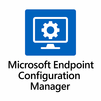
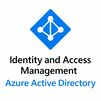


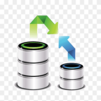
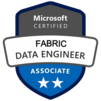
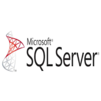

 Join our Live Instructor-Led online classes delivered by industry experts
Join our Live Instructor-Led online classes delivered by industry experts